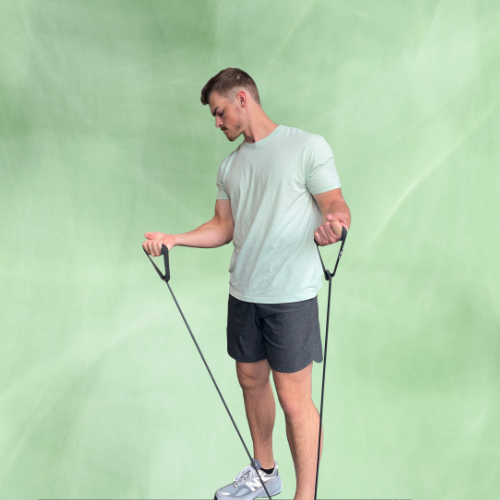
Finding Balance: Exploring the Benefits of Cork and Natural Rubber Yoga Mats
In the ever-evolving world of yoga accessories, the quest for the perfect mat often leads practitioners to explore innovative materials that align with their values of sustainability and performance. Among the myriad options available, cork and rubber emerge as eco-friendly alternatives that not only support the planet but also enhance the yoga experience. In this blog post, we'll delve into the unique qualities of cork and rubber yoga mats, shedding light on their benefits for both practitioners and the environment.
The Harmony of Cork: Nature's Gift to the Yoga Community
Cork, harvested from the bark of the cork oak tree, has long been revered for its sustainable properties and natural beauty. In recent years, cork yoga mats have gained popularity among eco-conscious yogis seeking a mat that seamlessly integrates with their practice and principles.
-
Sustainability: Cork is a renewable resource, with the harvesting process promoting the regeneration of the cork oak tree and preserving precious forest ecosystems. Unlike synthetic materials, cork is biodegradable and free from harmful chemicals, making it a planet-friendly choice for environmentally conscious practitioners.
-
Grip and Traction: One of the standout features of cork yoga mats is their exceptional grip and traction, even in the sweatiest of practices. The unique cellular structure of cork provides a non-slip surface that allows practitioners to move with confidence and stability, enhancing their overall yoga experience.
-
Natural Comfort and Support: Cork's natural elasticity and cushioning properties make it an ideal material for yoga mats, offering support for joints and muscles without compromising on comfort. Whether you're flowing through dynamic vinyasas or holding grounding poses, cork mats provide a supportive foundation that adapts to your body's needs.
Embracing the Earth with Rubber: Sustainable Solutions for Sustainable Practices
Rubber, derived from the sap of the rubber tree, is another eco-friendly material that has found its way into the world of yoga mats. Known for its durability and resilience, rubber mats offer a harmonious blend of performance and sustainability.
-
Durability and Longevity: Rubber yoga mats are built to withstand the test of time, making them a wise investment for dedicated practitioners. Unlike traditional PVC mats, which can degrade over time and release harmful toxins into the environment, rubber mats maintain their integrity and performance through countless practices.
-
Traction and Stability: Similar to cork, rubber mats boast impressive grip and traction, providing a stable foundation for yoga poses of all levels. Whether you're exploring arm balances, inversions, or restorative poses, rubber mats offer a secure surface that supports your practice and enhances your confidence on the mat.
-
Biodegradable and Eco-Friendly: Rubber yoga mats are crafted from natural rubber sources, making them biodegradable and environmentally friendly. At the end of their lifecycle, rubber mats can be safely returned to the earth, minimizing their ecological footprint and contributing to a more sustainable yoga community.
Conclusion: Striking a Balance with Cork and Rubber Yoga Mats
As yogis, our journey extends beyond the boundaries of the mat, encompassing a deep reverence for the earth and all its inhabitants. Cork and rubber yoga mats offer a bridge between our practice and our principles, allowing us to tread lightly on the planet while nurturing our mind, body, and spirit.
Whether you're drawn to the earthy elegance of cork or the rugged resilience of rubber, both materials invite us to reconnect with the natural world and embrace the essence of sustainability in our yoga practice. So, as you roll out your mat and step into the sacred space of your practice, may you find balance, harmony, and a deeper connection to the earth beneath your feet. Namaste.



